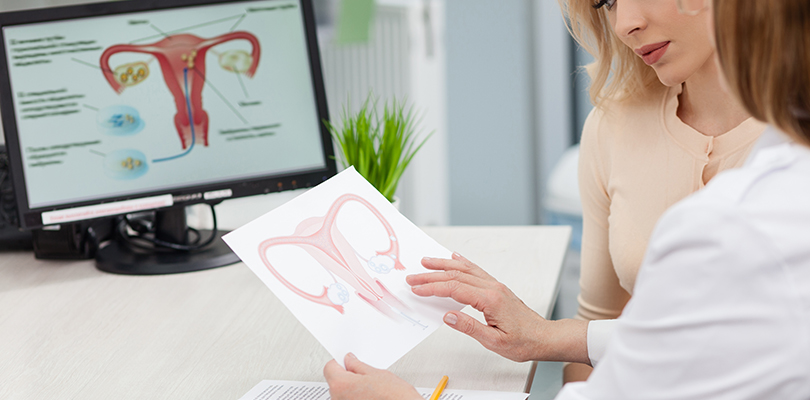All About Cosmetic Breast Surgery: What You Need to Know
Many women choose to have cosmetic breast surgery. They may be unhappy with the appearance of their breasts, or the size of their breasts may be causing other issues. The four major types of cosmetic breast surgery are breast reduction, breast augmentation (enlargement) and breast lifting.
Breast Reduction
Large breasts can be uncomfortable and may cause symptoms such as a backache, neck or shoulder pain and skin irritation underneath the breasts. For this reason, some women with large breasts choose to have them reduced surgically.
A breast reduction operation is carried out under general anesthetic and may last between 90 minutes and 4 hours. During this time, excess fat, breast tissue, and skin are removed. The breast is reshaped and the nipple is repositioned.
Breast Augmentation
Breast augmentation is a surgical procedure which can increase the size of the breasts and change their shape. Many women who choose this surgery are unhappy with the size of their breasts or have breasts which are uneven. It can also be used to improve the shape of the breasts following pregnancy, breastfeeding or weight loss, all of which can cause breast sagging and drooping.
Breast augmentation is done under general anesthetic and takes between 60 and 90 minutes. During the operation, an implant is inserted into the breast. This is usually made of silicone, but saline implants are also available. They come in a range of different sizes and may be round or teardrop shaped. The implant is placed either directly under the breast tissue or under the muscle behind the breast.
These implants have a lifespan of around 10 years, after which you will need another surgery to replace them. Another option is to use fat from elsewhere in the body to enlarge the breasts.
Breast Lift
Breast lifting, also known as mastopexy, is an operation which can improve the appearance of sagging breasts. It is carried out under general anesthetic and takes around 90 minutes. During the operation, excess skin is removed, the remaining skin is tightened and the nipple is repositioned.
This type of surgery works best with smaller breasts as the weight of larger breasts can cause them to pull down again over time, reducing the effects of the surgery. If you are considering this type of surgery, it is best to wait until after you have completed your family. This is because pregnancy and breastfeeding can cause the breasts to change shape, and you may need another operation.
Breast Reconstruction
Women who consider breast reconstruction surgery tend to be either breast cancer survivors who have had single or double mastectomies or women who have had their breast tissue removed as a way of reducing the risk of breast cancer due to a significant family history of the disease.
Breast reconstruction is a surgical procedure, performed by a plastic surgeon that restores the appearance of a breast by rebuilding the breast contour. Women can also opt to reconstruct the nipple and darker area around the nipple called the aureole. Reconstruction will not restore the normal feel and sensation of your breast.
Breast reconstruction surgery can be done at the same time as your mastectomy. The main benefit of immediate reconstruction is one less surgical procedure to endure. Delayed reconstruction may be appropriate if radiation is prescribed following the mastectomy.
Knee locking causes pain and stiffness, making it hard for a person to move their knee. Here are the different types of locked knees and how to treat them.
Tips for Choosing the Right Breast Surgeon
Cosmetic breast surgery is a big commitment, and you will want to get it right first time.
When you are choosing a surgeon, do your research beforehand. Ask them how many similar surgeries they have performed, what their patient satisfaction rates are, and what follow up will be provided if there are any complications.
Before going ahead, carefully weigh up the risks and benefits to ensure that cosmetic breast surgery is the best option for you.
Complications of Cosmetic Breast Surgery
There are many possible complications with breast surgery. Some are more common than others, so talk to your surgeon about what to expect before your operation. Some of the most common complications are:
- Thick or raised scarring
- Uneven breast shape or nipples
- Problems with healing
- Breast pain
- Loss of nipple sensation
- Reduced ability to breastfeed
- Lumps or redness
- Bleeding inside the breasts (usually within the first 24 hours)
Breast augmentation also carries the risk of further complications related to the implant itself, including:
- Leaking of the implant, causing lumps and pain
- Noticeable implants
- Implants may crease, fold, twist or ripple
- Slightly increased risk of a type of cancer called anaplastic large-cell lymphoma (ALCL)
With any surgery, there are also other risks to consider such as:
- Excess bleeding during surgery
- Infection
- Allergic reaction to the anesthetic
- Blood clots in the deep veins
Recovering from Cosmetic Breast Surgery
If you have cosmetic breast surgery, you may need to stay in a hospital for one or two nights after the operation or you may be able to leave the same day (depending on your surgery).
When you wake up, you will have dressings on your breasts and there will be tubes to help any excess fluid to drain away. During the first week after surgery, you should take it easy but do stay mobile to reduce the risk of complications such as blood clots. You should not drive for at least a week following breast surgery.
Your breasts will probably be swollen and tender and you should wear a comfortable sports bra, 24 hours a day for the first few months after surgery. You can take painkillers if necessary, but avoid aspirin as this can increase the risk of bleeding.
After one or two weeks you should have your stitches removed. You should then be able to return to your normal activities, but do avoid strenuous exercise, stretching and heavy lifting for at least six weeks. It can take several months to heal fully and to be able to see the final results of the surgery.







